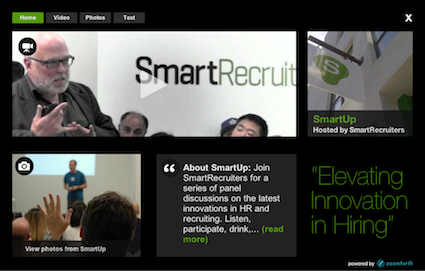A more prosperous economy, changing social norms, longer lives and technological revolution have each helped change the idea of an American “career” in the past thirty years. Though plenty of individuals still struggle through the workday, our aspirations for and general perspective on why we work no longer mirrors the often-downtrodden subjects of Studs Turkel’s 1974 expose “Working.” We live in an economy with an implicit understanding that if we’re talented, we’re entitled to love our work – to find in work an awe-inspiring purpose than exclusively providing for ourselves and families. Employers, accordingly, are beginning to realize that they’ll need to oblige this sentiment if they want to attract the best and brightest.
 Of course, the more valuable a candidate’s skill set and the more competitive the industry in which she operates, the more she is able to demand this be the case. Take the tech sector, for example. In an extremely quickly moving, and often volatile industry, talent is particularly valuable. Sure, salaries are super high in tech, reflecting the demand for quality developers, designers and strategists. But, at a certain tier, marginal salary differences between competing companies become less important than the myriad of those companies’ other qualities. Indeed, companies have to do a lot more than pay to attract the best talent. Creating a more viscerally joyful work experience is a start (hence the profusion of tech startups with ping-pong tables, free booze, and other fun additions to the workplace that have now become almost cliche). But to distinguish themselves, good companies must foster fulfilling work experiences – they must develop an excellent culture and community, provide opportunities for personal growth, and communicate an awe-inspiring purpose to contextualize day to day work functions.
Of course, the more valuable a candidate’s skill set and the more competitive the industry in which she operates, the more she is able to demand this be the case. Take the tech sector, for example. In an extremely quickly moving, and often volatile industry, talent is particularly valuable. Sure, salaries are super high in tech, reflecting the demand for quality developers, designers and strategists. But, at a certain tier, marginal salary differences between competing companies become less important than the myriad of those companies’ other qualities. Indeed, companies have to do a lot more than pay to attract the best talent. Creating a more viscerally joyful work experience is a start (hence the profusion of tech startups with ping-pong tables, free booze, and other fun additions to the workplace that have now become almost cliche). But to distinguish themselves, good companies must foster fulfilling work experiences – they must develop an excellent culture and community, provide opportunities for personal growth, and communicate an awe-inspiring purpose to contextualize day to day work functions.
A number of companies serve as good examples here. Take Asana, a software company that basically builds a sophisticated to-do list. Given that description, Asana wouldn’t strike the reader as a company whose purpose motivates its employees. But there are no discrete standards for what makes a company more purposeful than another, or whether one company culture is better than another. How well a company creates a satisfying work environment depends on the lens through which it views its work, the way in which it executes that work, and how that resonates with employees. Back to Asana:
“Asana’s mission is to empower humanity to do great things. Our approach is to build software that makes group communication and coordination effortless, giving teams of like-minded people the tools they need to accomplish dramatically more ambitious goals.”
Asana’s employees don’t believe they’re creating a pretty task list; they believe they’re changing the world. Buildasign.com, Etsy, Airbnb and Zappos are just a few others on a growing list of organizations whose products might not immediately suggest or require a deep connection to social impact or company culture, but whose employees, and often times customers, are acutely aware of and invested in the connection. The data show it’s good business, too. A 2003 University of Michigan study showed that organizations that were perceived by employees to be more virtuous also had significantly higher productivity, quality outputs, and lower employee turnover.
However, you can have an outstanding culture and mission and still fail to attract top talent. Good recruiting depends on successfully communicating those core company elements. Employers need to leverage media to succeed here. Your values, your culture, and the special sauce that makes your company the right place to be for the right candidate are all elements that candidates need to feel. The more relatable you can be, the better fits you’ll identify. Rich media provides the opportunity for candidates to get to know your company and, if they’re the right fit, become attracted to your company (yes, it’s sort of like the dynamics of online dating but for employment).
Try testing this theory. You’ve now spent a couple minutes reading my thoughts on work and recruiting. As passionate as I am about what I’m writing, you only have a cursory sense of who I am. Now go to our site: www.zoomforth.com/about (this is an elegant plug, isn’t it?!) and click on me. Check out a few photos and watch a few seconds of video. Pretty quickly, you get a much better sense of who I am. At Zoomforth, we’re helping companies do the same thing.
Growing organizations use multimedia to describe their people, positions and culture so that they attract the right fits. If companies can both implement measures that generate well-being and also communicate them, the returns are enormous. Beyond the intrinsic good of putting people in the right work environment and making them happy, the happier employees are at your company, the more effective they’ll be and the longer they’ll stay.
Photo Credit Smartup Zoomforth






